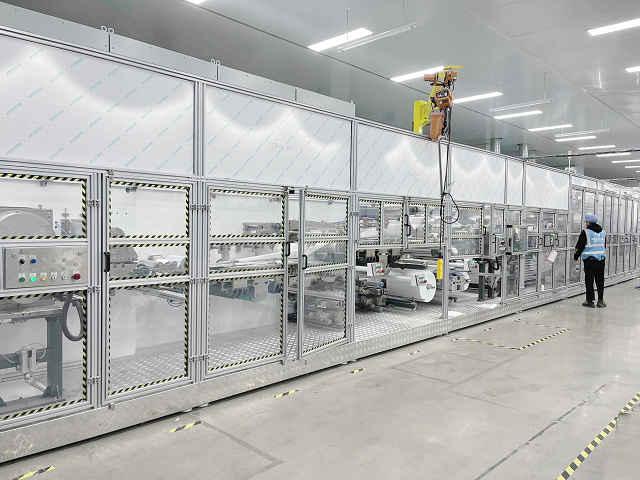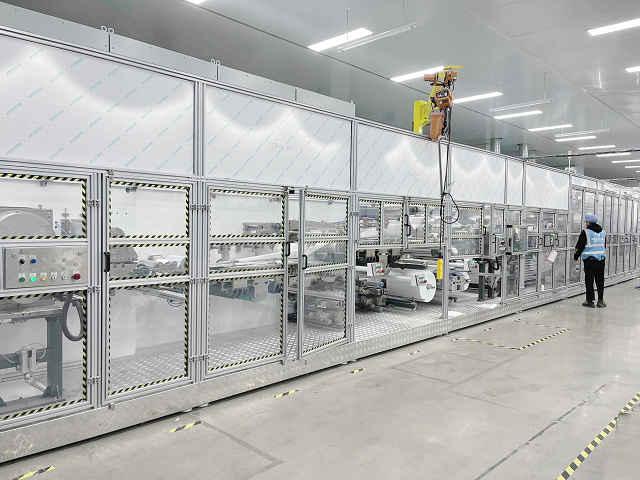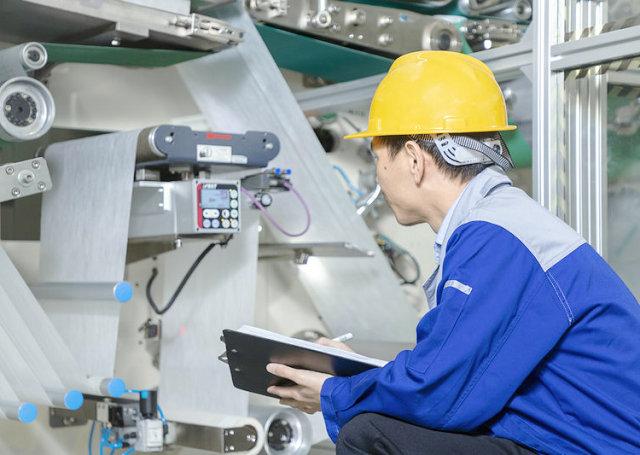Author:Haina Machinery Factory FROM:Diaper Machinery Manufacturer TIME:2025-01-19
Diaper machines play an essential role in the production of disposable diapers, ensuring efficiency and quality in manufacturing. As with any machinery involved in large-scale production, safety is a paramount concern. Manufacturers integrate various safety features into diaper machines to protect operators and ensure the reliability of the production process. This article explores the key safety features of diaper machines, highlighting their importance in maintaining a safe working environment.
One of the most critical safety features in diaper machines is the emergency stop mechanism. This feature allows operators to halt the machine's operation instantly in case of an emergency. Emergency stop buttons are strategically placed within easy reach of all operators, ensuring that they can quickly disable the machine if they encounter an unsafe situation. This mechanism helps prevent accidents and injuries, making it a vital component of any diaper manufacturing setup.
Safety guards and shields are essential for protecting workers from moving parts of the diaper machine. These barriers are designed to prevent accidental contact with gears, rollers, and other potentially hazardous components. By enclosing dangerous areas, safety guards minimize the risk of injury while allowing operators to perform maintenance and monitoring tasks safely. Regular inspections and maintenance of these guards are crucial to ensure their effectiveness over time.

Modern diaper machines often incorporate advanced sensor technology as a safety feature. Sensors can detect when an operator is too close to moving parts or if there is a malfunction in the machine. For example, if a sensor identifies an unusual vibration or temperature increase, it can trigger an automatic shutdown to prevent further damage or potential accidents. This proactive approach to safety helps maintain optimal functioning while safeguarding personnel.

While mechanical safety features are crucial, human factors also play a significant role in workplace safety. Comprehensive training programs for operators are essential to ensure that they understand how to use the diaper machine safely. Training includes instruction on recognizing potential hazards, understanding emergency procedures, and adhering to safety protocols. By fostering a culture of safety awareness, manufacturers can significantly reduce the likelihood of accidents.
Fire safety is another important consideration in the design of diaper machines. Since these machines can handle materials that may be flammable, manufacturers implement various fire safety measures. This can include installing fire suppression systems, using non-combustible materials in construction, and ensuring that electrical components are properly insulated. Regular fire drills and maintenance checks help keep these safety features operational and effective.
Prolonged exposure to high noise levels can pose significant health risks to workers. Diaper machines are designed with noise reduction features to mitigate this issue. These features may include sound insulation materials, vibration dampening systems, and optimized machine designs that reduce operational noise. By addressing noise pollution, manufacturers not only comply with occupational health regulations but also create a more comfortable working environment for employees.
Regular maintenance and inspections are vital to ensuring that all safety features of the diaper machine remain functional. Scheduled check-ups allow technicians to identify and rectify any wear and tear, ensuring that safety mechanisms operate as intended. Implementing a proactive maintenance schedule minimizes downtime and enhances the overall safety of the production environment. It is a best practice that contributes significantly to the longevity of the machinery and the safety of its operators.
Diaper machine manufacturers must adhere to stringent safety regulations set by governmental and industry standards. Compliance ensures that machines are designed and operated within specific safety guidelines, reducing the risk of accidents and injuries. Manufacturers often undergo regular audits and assessments to verify adherence to these regulations, demonstrating their commitment to providing a safe working environment for employees.

In conclusion, the safety features of diaper machines are integral to protecting operators and ensuring efficient production processes. From emergency stop mechanisms and safety guards to advanced sensor technologies and comprehensive training programs, these features work together to create a safer working environment. Manufacturers must commit to regular maintenance and compliance with safety regulations to uphold these standards. By prioritizing safety, diaper manufacturers not only safeguard their employees but also enhance the overall efficiency and reliability of their operations.
